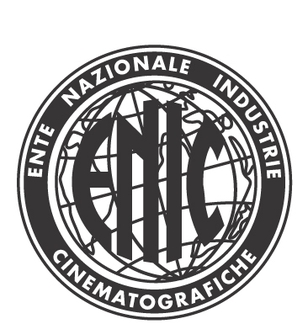
The Venice Film Festival or Venice International Film Festival is an annual film festival held in Venice, Italy. It is the world's oldest film festival and one of the "Big Five" International film festivals worldwide, which include the Big Three European Film Festivals, alongside the Toronto Film Festival in Canada and the Sundance Film Festival in the United States. The Festivals are internationally acclaimed for giving creators the artistic freedom to express themselves through film. In 1951, FIAPF formally accredited the festival.

The 1930s was a decade that began on January 1, 1930, and ended on December 31, 1939. In the United States, the Dust Bowl led to the nickname the "Dirty Thirties".
1935 (MCMXXXV) was a common year starting on Tuesday of the Gregorian calendar, the 1935th year of the Common Era (CE) and Anno Domini (AD) designations, the 935th year of the 2nd millennium, the 35th year of the 20th century, and the 6th year of the 1930s decade.

Italian neorealism, also known as the Golden Age, was a national film movement characterized by stories set amongst the poor and the working class. They are filmed on location, frequently with non-professional actors. They primarily address the difficult economic and moral conditions of post-World War II Italy, representing changes in the Italian psyche and conditions of everyday life, including poverty, oppression, injustice and desperation.

A Night at the Opera is a 1935 American comedy film starring the Marx Brothers, and featuring Kitty Carlisle, Allan Jones, Margaret Dumont, Sig Ruman, and Walter Woolf King. It was the first of five films the Marx Brothers made under contract for Metro-Goldwyn-Mayer after their departure from Paramount Pictures, and the first after Zeppo left the act. The film was written by George S. Kaufman and Morrie Ryskind from a story by James Kevin McGuinness, with additional uncredited dialogue by Al Boasberg. The film was directed by Sam Wood.
The following is an overview of 1935 in film, including significant events, a list of films released and notable births and deaths. The cinema releases of 1935 were highly representative of the early Golden Age period of Hollywood. This period was punctuated by performances from Clark Gable, Shirley Temple, Fred Astaire and Ginger Rogers, and the first teaming of Jeanette MacDonald and Nelson Eddy. A significant number of productions also originated in the UK film industry.

The Second Italo-Ethiopian War, also referred to as the Second Italo-Abyssinian War, was a war of aggression which was fought between Italy and Ethiopia from October 1935 to February 1937. In Ethiopia it is often referred to simply as the Italian Invasion, and in Italy as the Ethiopian War. It is seen as an example of the expansionist policy that characterized the Axis powers and the ineffectiveness of the League of Nations before the outbreak of the Second World War.
In 1999, the British Film Institute surveyed 1,000 people from the world of British film and television to produce a list of the greatest British films of the 20th century. Voters were asked to choose up to 100 films that were "culturally British".

Michał Waszyński was first a film director in Poland, then in Italy, and later a producer of major American films, mainly in Spain. Known for his elegance and impeccable manners, he was known by his acquaintances as "the prince".
A list of some notable films produced in the Cinema of Italy ordered by year and decade of release For an alphabetical list of articles on Italian films see Category:Italian films.
"Por una Cabeza" is a tango song written in 1935 with music by Carlos Gardel and lyrics by Alfredo Le Pera.

Goffredo Alessandrini was an Italian scriptwriter and film director. He also acted, edited, and produced some films.

Carmine Gallone was an early Italian film director, screenwriter, and film producer, who was also controversial for his works of pro-Fascist propaganda and historical revisionism. Considered one of Italian cinema's leading early directors, he directed over 120 films in his fifty-year career between 1913 and 1963.
The Centro Sperimentale di Cinematografia (CSC),, is an Italian national film school headquartered in Rome. It is also referred to as the Scuola Nazionale di Cinema and has satellite educational hubs in five other Italian regions.
Events from the year 1935 in France.

Ente Nazionale Industrie Cinematografiche (ENIC) was an Italian film production and distribution entity that operated between 1935 and 1956.










